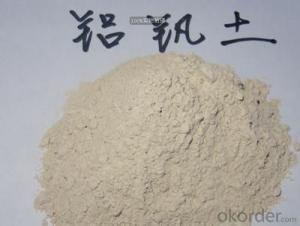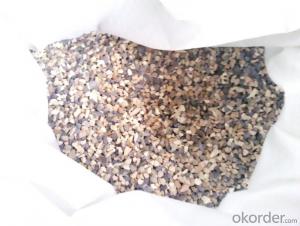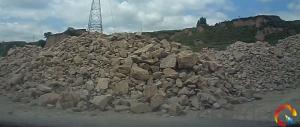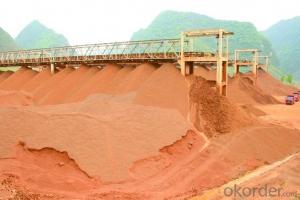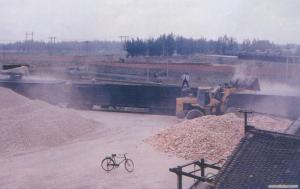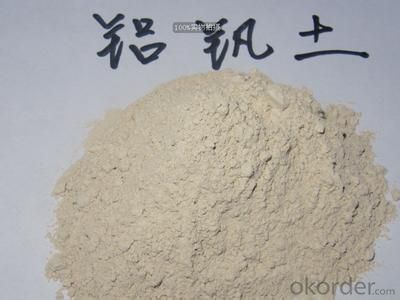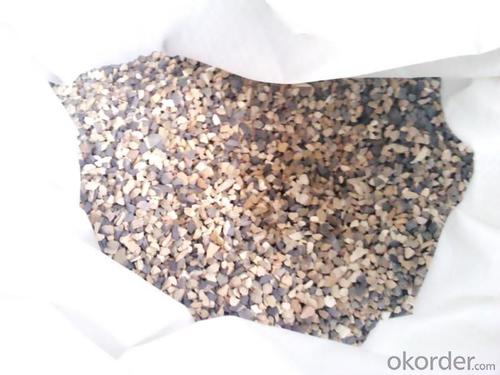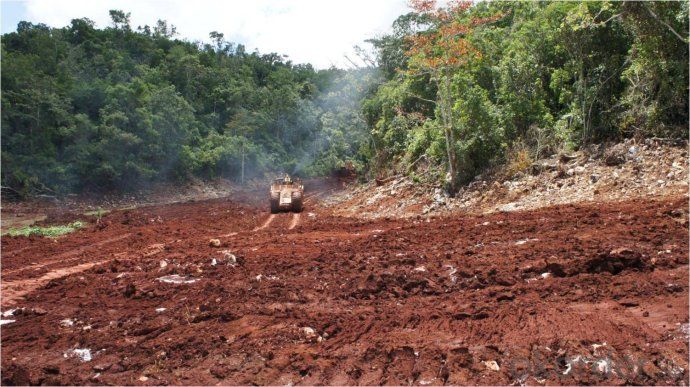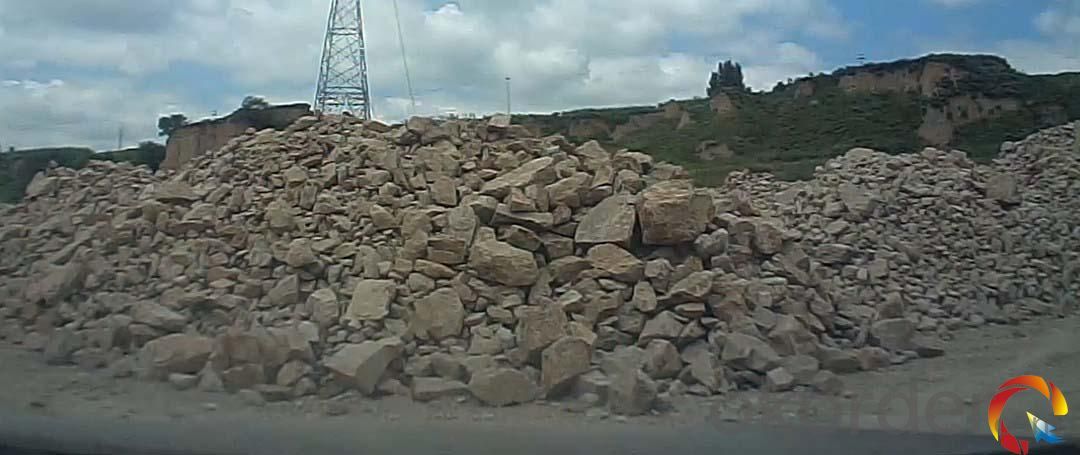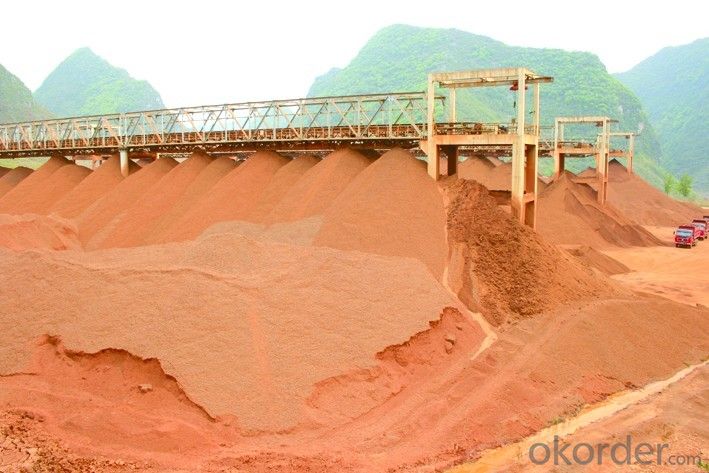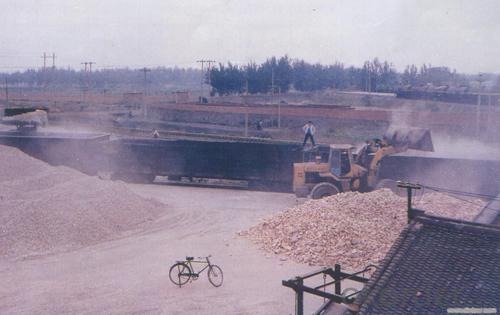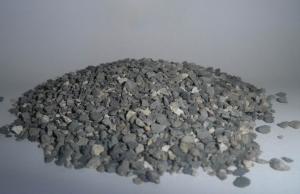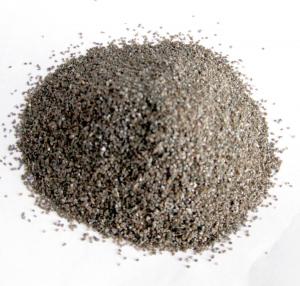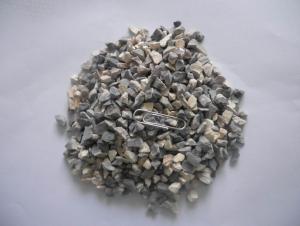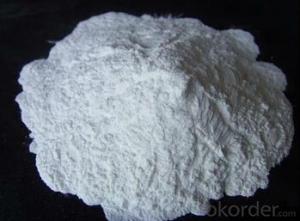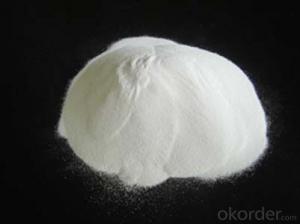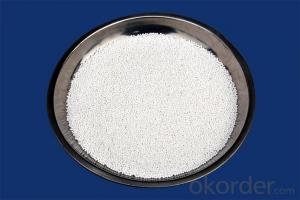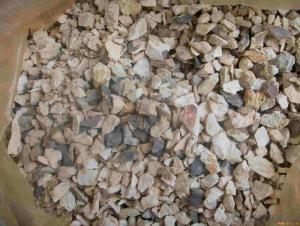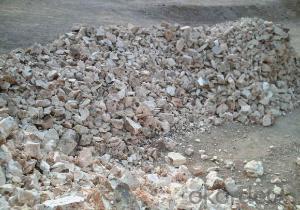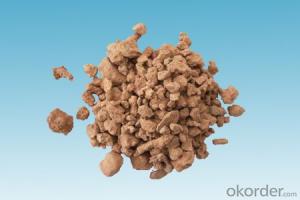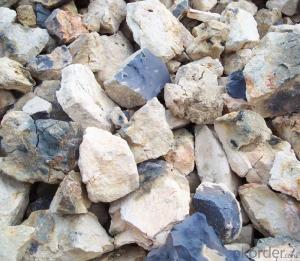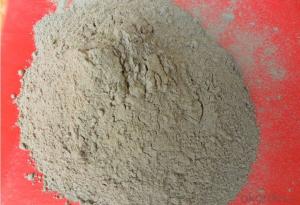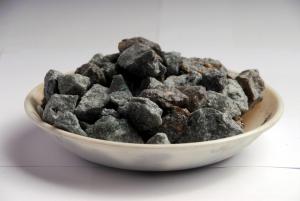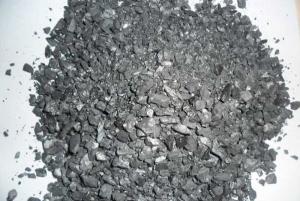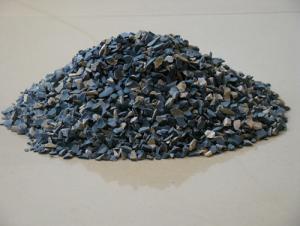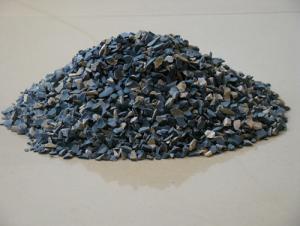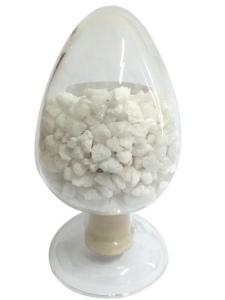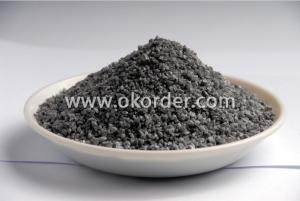Raw Materials for Refractory:Kiln Calcined Bauxite for High Alumina Brick of CNBM in China
- Loading Port:
- Tianjin
- Payment Terms:
- TT OR LC
- Min Order Qty:
- 1 m.t.
- Supply Capability:
- 10000000 m.t./month
OKorder Service Pledge
OKorder Financial Service
You Might Also Like
Kiln Calcined Bauxite for High Alumina Brick of CNBM in China
1.Structure of Calcined Bauxite Description
Bauxite (aluminous soil; Bauxite) is also called the alumina or bauxite, main ingredients are alumina, hydrated alumina containing impurities, is an earthy mineral. White or gray, brown and yellow or light red by iron. From 4 to 3.9 g/cm3 density, hardness, 1 ~ 3 is not transparent, very brittle. Very difficult to melt. Insoluble in water, soluble in sulfuric acid, sodium hydroxide solution. Mainly used for aluminium, refractory material.
2.Main Features of the Calcined Bauxite
Calcined bauxite is one of the principal ore of aluminum. Calcined bauxite contains hydrous aluminum oxides and aluminum
hydroxides, formed through the laterization of aluminous rocks in tropical and subtropical areas .Calcined bauxite is obtained by calcining (heating)superior grade bauxite at high temperature (from 85OC to 1600C) .This removes moisture there. By increasing the alumina content,compared to an alumina content of about 57%to 58% in raw bauxite, calcined bauxite has an alumina content of 84%to88%.The heating is carried out in rotary kilns.
3. Calcined Bauxite Images
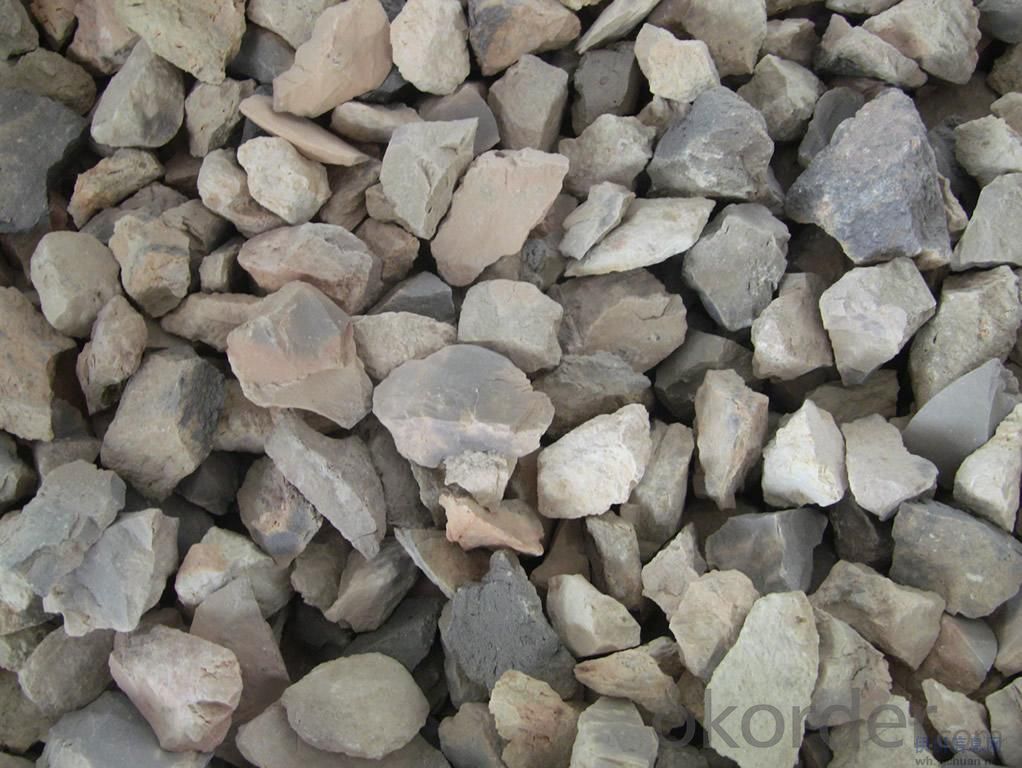
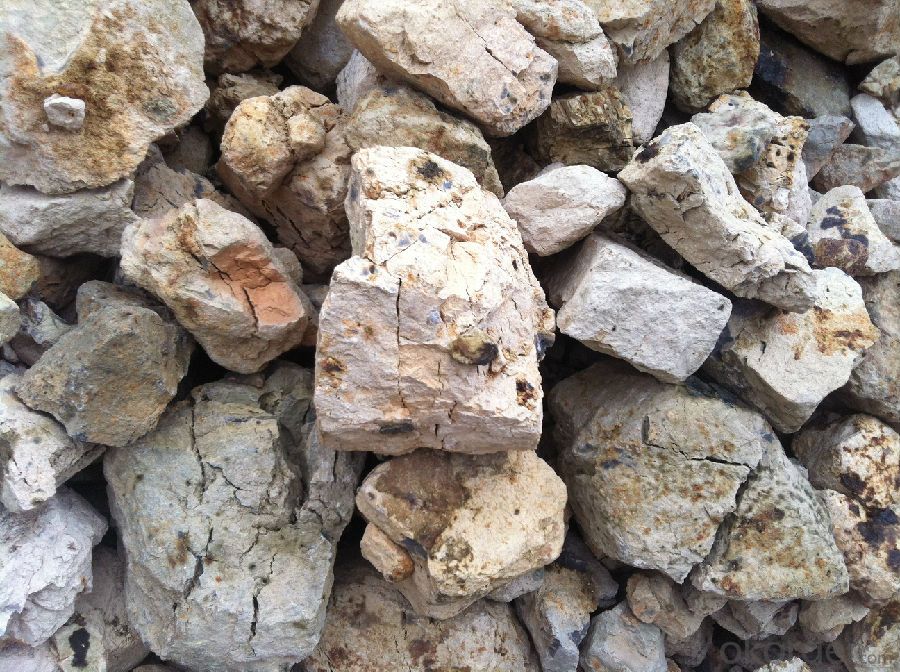
4. Calcined Bauxite Specification
| Place of Origin: | Henan, China (Mainland) | Shape: | Brick | Material: | Alumina Block |
| SiO2 Content (%): | International standard | Al2O3 Content (%): | ≥65 | MgO Content (%): | International standard |
| CaO Content (%): | International standard | Refractoriness (Degree): | 1770°< Refractoriness< 2000° | CrO Content (%): | International standard |
| SiC Content (%): | International standard | Model Number: | RL-65 | Brand Name: | cnbm |
| Fe2O3 %: | ≤2 | Refractoriness: | ≥1790°C | Apparent porosity: | ≤24% |
| Cold crushing strength (Mpa): | ≥49.0 | Refractoriness under load(0.2MPa): | ≥1500°C | Reheating Linear Change (1500°C, 2h) %: | +0.1~ -0.4 |
| Size: | 230*114*65/75 | Sample: | free | Price: | factory outlets |
5.FAQ of Calcined Bauxite
1). Q: Are you a factory or trading company?
A: We are a factory.
2). Q: Where is your factory located? How can I visit there?
A: Our factory is located in ShanXi, HeNan, China. You are warmly welcomed to visit us!
3). Q: How can I get some samples?
A: Please connect me for samples
4). Q: Can the price be cheaper?
A: Of course, you will be offered a good discount for big amount.
- Q: hat kind of fire retardant materials are there
- At present, there are mainly organic and inorganic flame retardant materials, halogen and non halogen. Organic flame retardant materials are represented by bromine, nitrogen and phosphorus and its compounds; Inorganic fire retardant materials include antimonous oxide, magnesium hydroxide, aluminum hydroxide, and silicon. Generally speaking, organic flame retardant materials have a good affinity, and can be added in the plastics. Brominated flame retardant agent occupy the absolute advantage among organic flame retardant system, though it’s “controversial” in terms of environmental protection, it has been difficult to have other flame retardant system replaced.
- Q: what's the standard of fireproofing material?
- first, the classification of fire resistant levels of buildings, 1, the classification basis of fire resistant levels of buildings, the classification of fire resistant levels of buildings is one of the basic building fire protection technology measures, our national architectural design specification divides fire resistant levels of buildings into first, second, third and fourth class, first class ios the highest and has the most strong fire-resistant capacity, fourth class is the lowest and has the weakest fire-resistant capacity. Fire resistant level of buildings depends on the combustion performance and fire endurance of the components of the buildings. construction components refer to the wall, base, beam, column, floor, stair, suspended ceiling and other basic components of buildings. Combustion performance and fire endurance of building components are shown in table 4-11), the combustion performance of building components are divided into non-combustible component,hard-comnustible component,combustible?component,according to their response to the fire. as for building components, non-combustible component includes wall column and base,etc; hard-comnustible component includes hanging?bracket, suspended ceiling and internal pipe;combustible?component includes doors and windows, suspended ceiling, decoration materials,etc.
- Q: what's the classification of fireproof and thermal inuslation matertial?
- 1. thermal insulation material with A class combustion performance. Rock wool, glass wool, foam glass, foamed ceramics, foam cement, hole-closed perlite (2) thermal insulation material with B class combustion performance: extruded polystyrene board after special processing (XPS)/ polyurethane after special processing (PU) , phenolic aldehyde, gelatine powder polyphenyl granule. 3,thermal insulation material with B2 class combustion performance: molding polystyrene board(EPS), extruded polystyrene board(XPS), polyurethane (PU), polyethylene (PE),etc. sea capacity module and vitrified micro bead(cooperate with the innovator of vitrified micro bead, Liu Weihua) fireproofing issues have been completely solved.
- Q: how to divided the external wall thermal insulation materials fire rating
- Level A: Incombustible building material is a material that does not occur any burning. Level A1: Noncombustible means no open fire. Level A2 It is noncombustible, and should measure smoke to be qualified. Level B1: Nonflammable building material: Non-flame material has good flame resistance. It is difficult to fire under the condition of open fire in the air or high temperature, and it is not easy to quickly spread, and when the combustion?source is removed, the combustion will stop immediately. Level B2: Combustible?building?materials: Flame material has a good flame resistance. In case of fire in the air or at high temperature, it will immediately burst into flames, and easily lead to the spread of fire, such as wooden column, timber roof truss, timber beam and wooden stairs. Level B3: inflammable building material has no any flame resisting effects, and is easy to burn, so the fire risk is high.
- Q: Which kind of refractory floor is easy to use? ?
- Fireproof wood floor includes three types, and according to your requirement, I think that the third type is more suitable or is easier to use. Here are the three types, and you can choose form them. A. Wear-resistant composite solid wood floor It is also known as super durable multi-layer solid wood floor. Its surface is inorganic glass fiber material and special paper impregnation thermosetting amino?resin, composited with solid wood base materials like plywood or core-board. And also, its front is wear-resistant layer while the back is balance layer, then hot press it into grooved and tongued floor. This is a new impregnated paper laminate floor. It also has the same wear-resistant quality as laminate floor, comfort as solid wood floor, and stability as composite board. B. Fire-resistant wood-plastic composite decking board Wood-plastic composite decking board is not the wood floor in the traditional sense, but a composite material, also known as plastic wood. It is formed by high molecular improving and processing natural fiber, such as recycled plastic and wood fiber. It not only has the same advantages as plastic and wood, but alos has certain fire resistance, thus it is a environmentally friendly material with much development potential. C. Fireproof strengthened composite wood floor It is the so-called fireproof and fire retardant floor, fiber board, plywood and chipboard as its base materials. It is coated with fireproof coating and impregnated paper, and after fireproof and fire retardant technical process, it becomes a composite wood floor with some fire?retardant level. Its features are more partial to that of laminate floor with stable performance, steady structure and good durability.
- Q: Does refractory belong to metallurgical auxiliary materials?
- Refractory includes metallurgical auxiliary materials.
- Q: What's the fire resistance rating of the exterior fire?retardant?coating?
- First of all, fire retardant coating has no class distinctions. Buildings fire resistance rating is generally classified as follows: I grade fire resistance, II grade fire resistance, III grade fire resistance, IIII grade fire resistance. Buildings with I grade and II grade fire resistance are much common. According to the coating thickness, exterior fire-resistant coating for steel structure can be classified as follows: 1. Exterior thin fire-resistant coating for steel structure, 2. Exterior ultra-thin fire-resistant coating for steel structure, 3. Exterior thick fire-resistant coating for steel structure.
- Q: who knows the fire endurance of fireproof coating?
- It's fire endurance is 3hours. Fire endurance test of certain building components showed by standard time temperature curve from the starting of fire to lose of supporting capabilities or its integrity or fireproof property. unit time is one hour.
- Q: What is the biggest difference between refractory bricks and clay refractory bricks? Where can I find information on the refractory bricks?
- You can look up knowledge manual of refractory material to find phosphatic material, etc. Xinjiang refractory bricks, castable refractory, refractory material, silicious, corundum and alumina-magnesia: High alumina and clay refractory bricks can be divided into
Send your message to us
Raw Materials for Refractory:Kiln Calcined Bauxite for High Alumina Brick of CNBM in China
- Loading Port:
- Tianjin
- Payment Terms:
- TT OR LC
- Min Order Qty:
- 1 m.t.
- Supply Capability:
- 10000000 m.t./month
OKorder Service Pledge
OKorder Financial Service
Similar products
Hot products
Hot Searches
Related keywords
